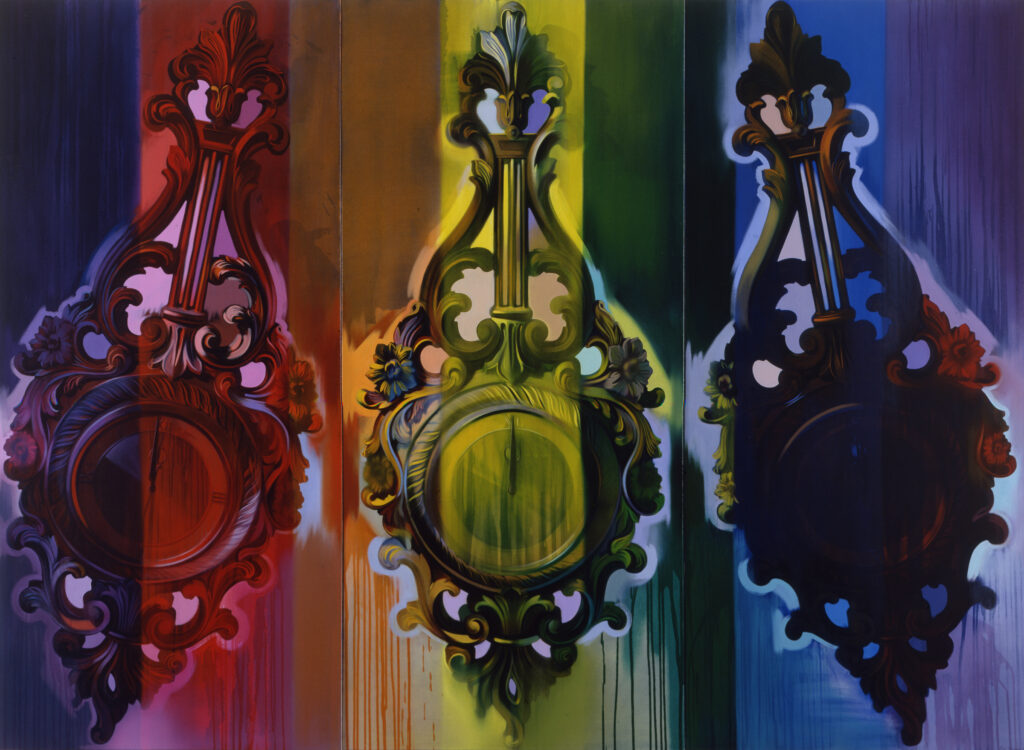Beyond Loss: Art in the Era of AIDS
April 23 through June 13, 1993
Introduction and artists’ notes by Grant Samuelsen
with input from Donald Russell and Michael Floyd
Now, at the beginning of the second decade of the AIDS crisis and surrounded by numbers (mortalities, people with AIDS, HIV-positives, and future projections), statistics become almost unneccessary to fathom the effects of the disease on artists. Evidence of the far-reaching psychological, moral, and emotional toll of AIDS is present in the work of many artists, and the artworld has seen far more than its share of AIDS-related deaths. The visible signs are put into sharp relief through the work of activist- artists and collaborative groups such as Gran Fury, ActUp, and Visual AIDS (whose Electric Blanket is being shown in conjunction with this exhibition). The agitprop activities of these groups has been instrumental in establishing models for AIDS education. By addressing the pathetic deficiencies of government-sanctioned strategies and the bigotry underlying those strategies, they have refined the relationship between art and socially conscious action. Simply stated, AIDS has profoundly changed that broadly-defined thing called “The Arts.”
In sheer numbers, the continuing loss of artists and the truncated development of many promising careers is a profound tragedy. This situation has forced many artists to confront issues of mortality, sexuality, and the fragility of the body in a more accelerated and direct manner than would have been the case if AIDS had never appeared on the scene-and the traces left behind in the work too often bear witness to the intensity of feeling caused by this quick evolution.
Any analysis of the disease’s effect on artists is as problematic as the reliance on determinatives such as “divine madness” or “the presence of the muse” as explanations for the elemental makeup of art. Profound weaknesses lie in thinking that, on the one hand, “AIDS has been good for art and has produced new forms,” and, on the other, that “Art lives beyond AIDS; we are lucky to have their work left behind as a memorial.” True, both views touch upon central issues in the definition of AIDS as a cultural phenomenon but both also exclude a simple fact: that there are lives behind artworks, just as there are lives behind the columns of hard numbers used to explain the demographics of AIDS. Beyond Loss seeks to flesh out the diverse and rich quality of these lives, the reasons for concern, and the ways in which AIDS has deeply affected everyone it touches.
Washington Project for the Arts, Washington, DC
Notes on the Artists (excerpt)
BRETT REICHMAN – born 1959
Brett Reichman’s work consists of equal parts high camp, unmediated kitsch, virtuoso draftsmanship, and an acerbic critical sensibility. At first, the work seems deadly serious-and, ultimately, it is-but what quickly emerges out of the strange, irradiated palette and elegant draftsmanship is a view into a world populated by cartoon characters and the creations of the Brothers Grimm.
Reichman takes on the self-parodic and self-defeating aspects of “Gay Culture” and creates for it reflections in objects and characters which are lifted straight out of Neverland. The three clocks in And the spell was broken …, with their long hands at, respectively, one minute before, one minute after, and precisely at midnight, seem to refer directly to the inevitability of death. But look closer: the clock’s case is excessively ornate, stereotypically Germanic, and absurdly proportioned-a time- piece right off of the walls of Gepetto’s shop, with Pinocchio possibly sitting on the workbench beneath. Quietly screaming, Reichman’s work implores the viewer to get out of the fairy-tale world of self-perpetuating, internalized cultural stereotypes. Reichman’s work is in many ways a call to action-but on an internal, self-aware level.
